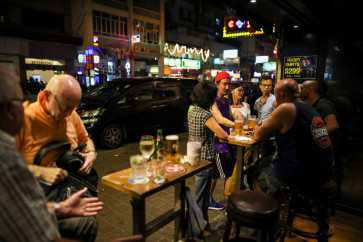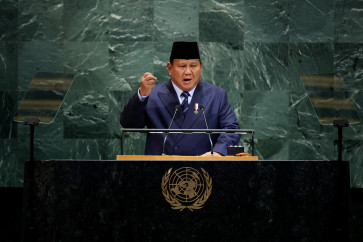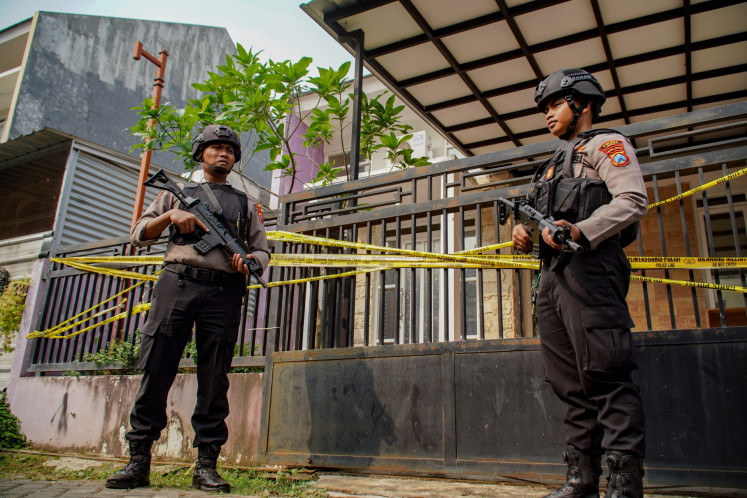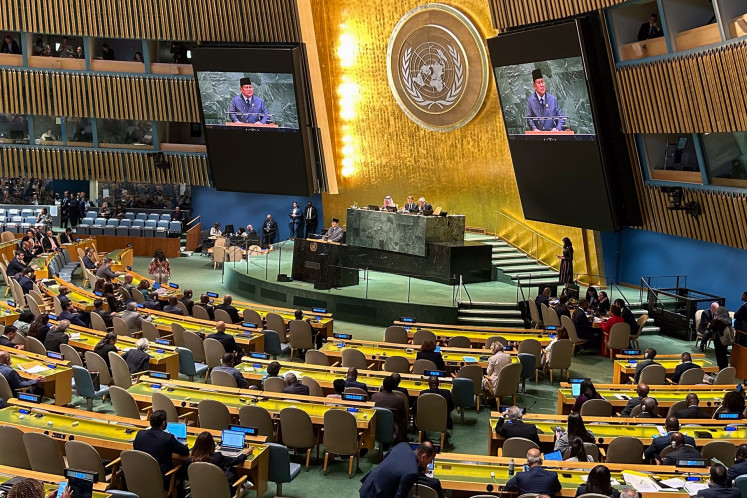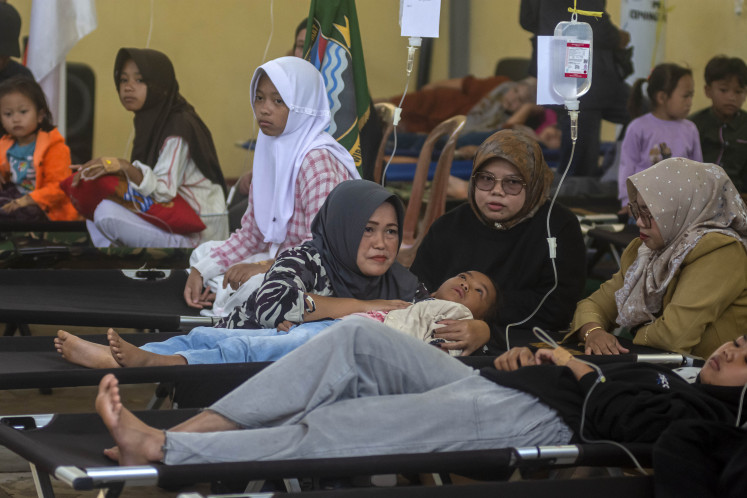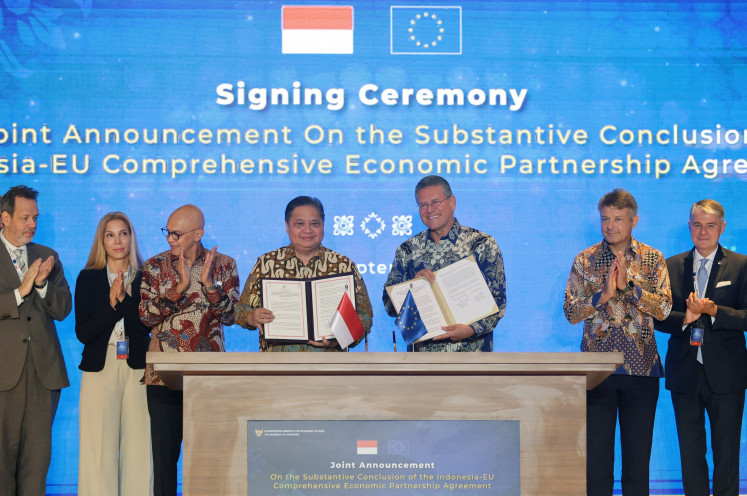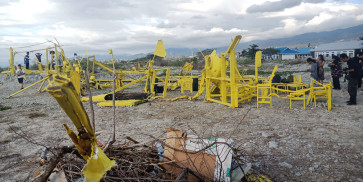Popular Reads
Top Results
Can't find what you're looking for?
View all search resultsPopular Reads
Top Results
Can't find what you're looking for?
View all search resultsDisaster-resilient urbanites
The cost of damage caused by natural disasters suffered by ASEAN countries and its cities is averaging about US$4.4 billion annually, according to the ASEAN Agreement on Disaster Management and Emergency Response in 2016.
Change text size
Gift Premium Articles
to Anyone
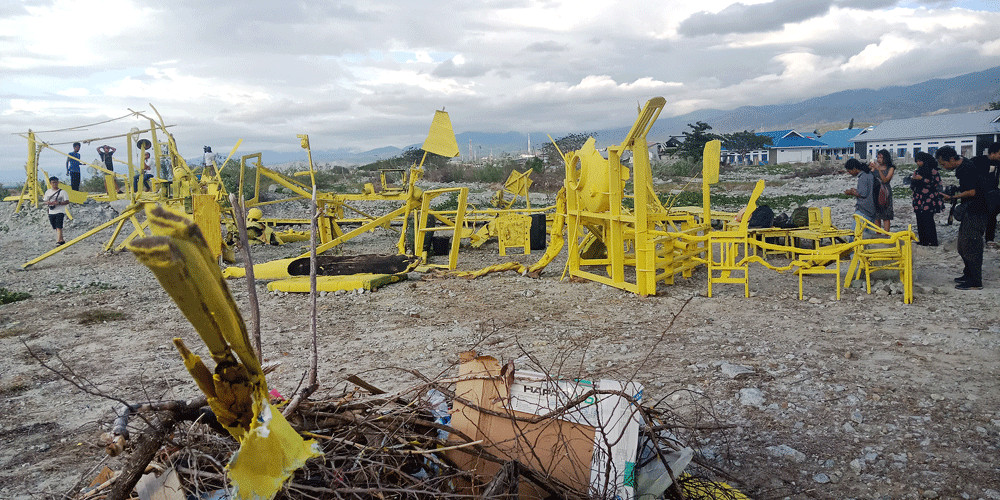 Artists Daisuke Takeya from Japan and Kukuh Ramadan and Rahmadiyah Tria Gayatri from Palu, Central Sulawesi, present their art installation called Yellow Memories on Talise Beach on Jl. Komodo, East Palu. All material used for the art work comprised debris collected from nearby areas that were hit by a tsunami on Sept. 28, 2018. (The Jakarta Post/Ruslan Sangadji)
Artists Daisuke Takeya from Japan and Kukuh Ramadan and Rahmadiyah Tria Gayatri from Palu, Central Sulawesi, present their art installation called Yellow Memories on Talise Beach on Jl. Komodo, East Palu. All material used for the art work comprised debris collected from nearby areas that were hit by a tsunami on Sept. 28, 2018. (The Jakarta Post/Ruslan Sangadji)
S
everal cities such as Mataram in West Nusa Tenggara, Palu in Central Sulawesi and, recently, Kalianda in Lampung and Banten have experienced various natural disasters, from earthquakes and tsunami to volcanic eruptions. Other disasters mostly affected by uncontrolled urbanization such as floods, landslides, drought, forest fires and so on are easily found in many cities. Various recovery efforts have started and are being carried out by the government at the national and local levels, as well as self-help efforts among citizens.
Disaster management, especially those related to climate change, comprises mitigation and adaptation. Mitigation relates to the causes of environmental degradation that leads to climate change, whereas adaptation covers all actions or efforts related to the impact. For example, in 2016 the government set targets in its first “nationally determined contribution”. For mitigation, the government aims to reduce emissions by 29 percent by 2030. For adaptation, the government aims to reduce the risks of disaster impacts on agriculture, energy, forestry, marine and other sectors.
Despite many efforts from the global to the local level and various initiatives in disaster risk reduction and management, people remain highly vulnerable to the impacts of disasters. Moreover, for cities in developing countries, most public infrastructure is unsustainable. The cost of damage caused by natural disasters suffered by ASEAN countries and its cities is averaging about US$4.4 billion annually, according to the ASEAN Agreement on Disaster Management and Emergency Response in 2016.
The Organization for Economic Cooperation and Development (OECD) in its latest study entitled “Building Resilient Cities: An Assessment of Disaster Risk Management Policies in Southeast Asia” revealed some alarming findings. It reported that most cities in Southeast Asia still lack proper studies and planning regarding vulnerability and assessment of disaster risks. As a result, development planning such as land use management refers very little to the risk of disaster.

